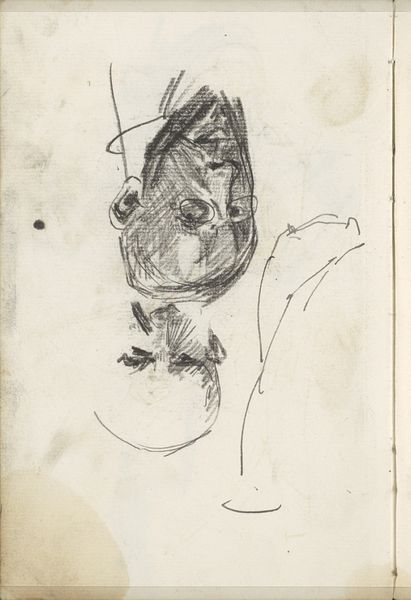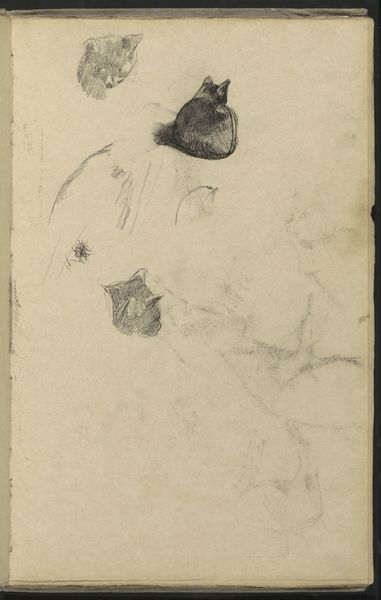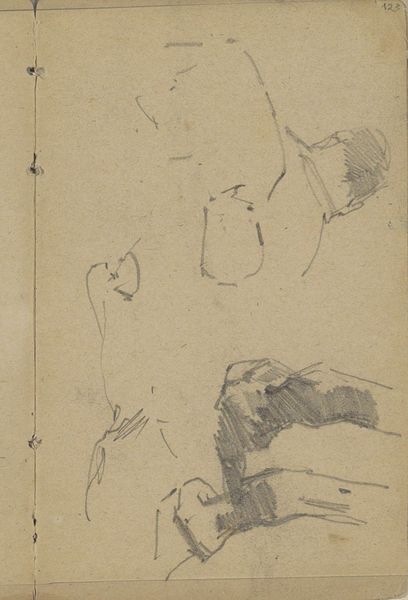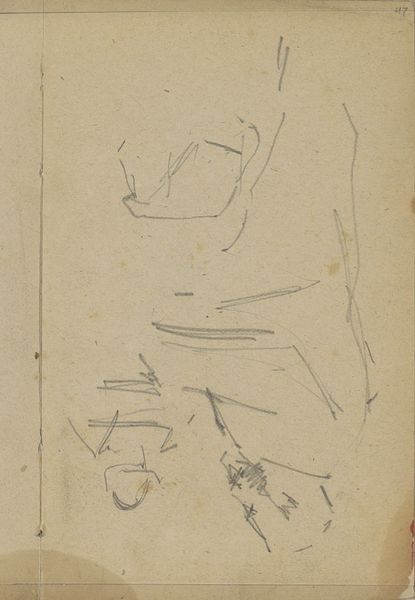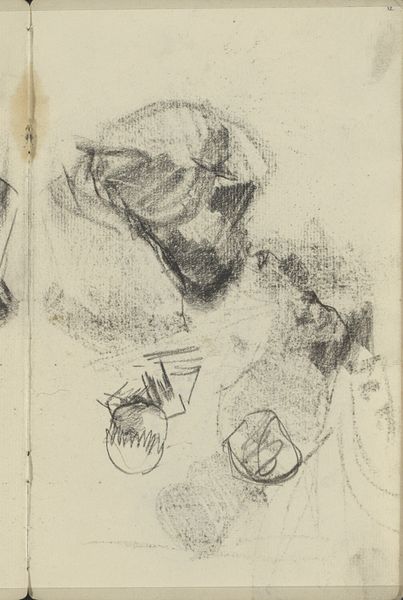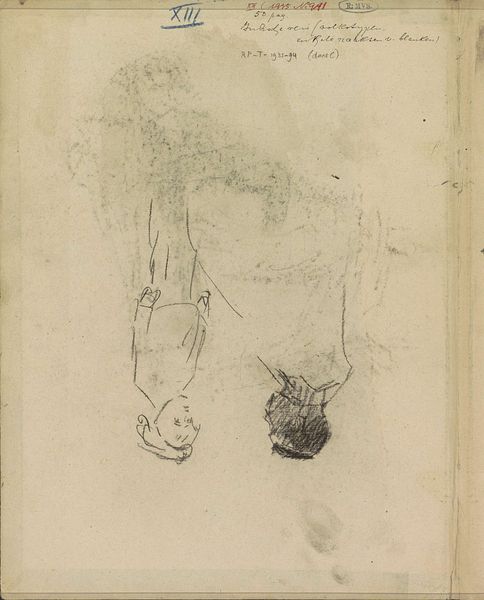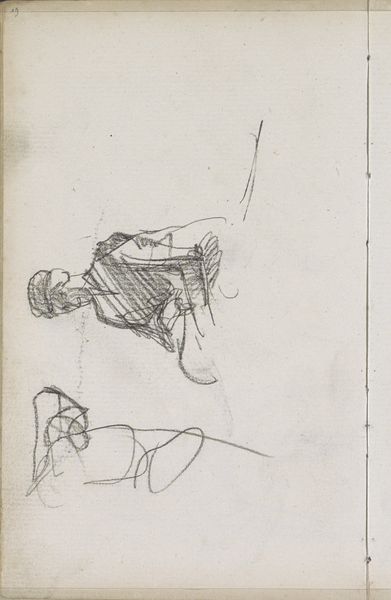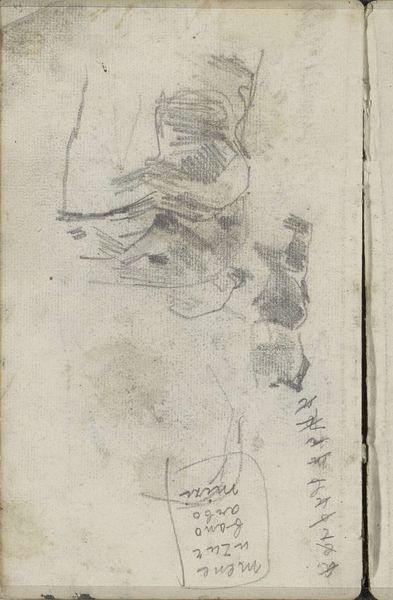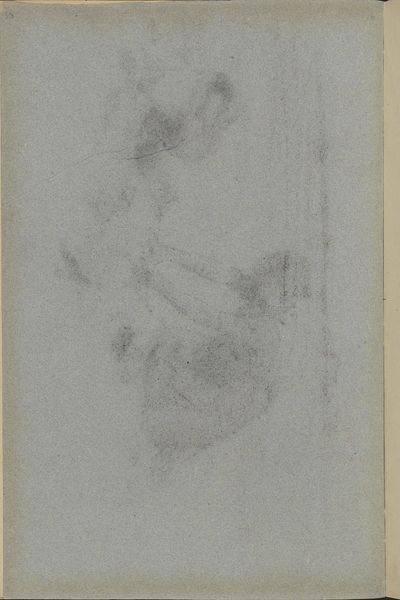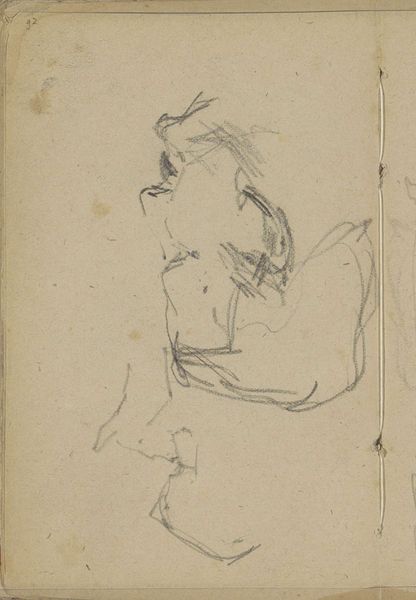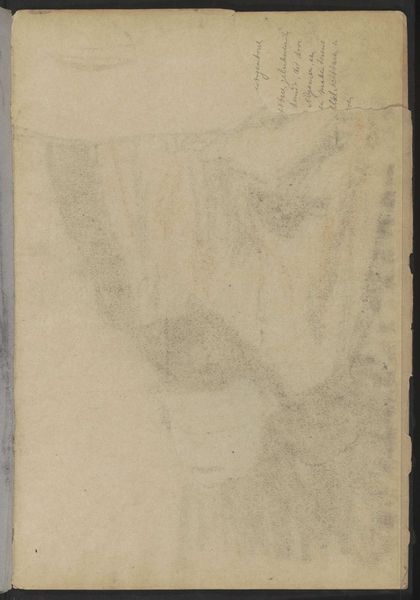
drawing, paper, pencil
#
portrait
#
drawing
#
amateur sketch
#
light pencil work
#
impressionism
#
pencil sketch
#
incomplete sketchy
#
figuration
#
paper
#
personal sketchbook
#
idea generation sketch
#
sketchwork
#
detailed observational sketch
#
pencil
#
sketchbook drawing
#
sketchbook art
#
realism
Copyright: Rijks Museum: Open Domain
Curator: This is a sketch by George Hendrik Breitner entitled "Studieblad met vrouwenhoofden," created between 1884 and 1886. Editor: The hurried quality of the pencil on paper is really striking. There’s something raw and immediate about these fleeting glimpses of women’s faces. You almost feel like you’re intruding on a private moment, observing from over Breitner's shoulder. Curator: It's quite evocative, especially if you consider Breitner's social circles and his depictions of working-class women in Amsterdam during that era. We see so many works portraying women idealized in domestic roles, but Breitner seems to capture something more... vulnerable. The quick strokes convey movement, and an essence that is very relatable even today. The reality of marginalized groups, the undercurrents of capitalist pressure—they subtly permeate the image. Editor: Right, it makes me think about the actual physicality of creating art in the late 19th century. This isn’t just about "artistic genius" — Breitner's material reality would have influenced the frequency, the style and what paper he was using at any given time. Sketches were, for many, like notes toward commerce; quick studies of faces and physiognomy in anticipation of a later commission. You also get a feel of labor by seeing that light pencil work repeated over and over. Curator: Precisely. I believe he was searching, perhaps grappling with the limited space available to women. This exploration is so intriguing! His visual language invites a kind of conversation. Editor: And you sense he was going after a true-to-life and real feeling of these working women’s characters. There are lots of subtle cues as to how to view women. Curator: Agreed. I'm seeing, perhaps, Breitner challenging dominant ideologies. This raw sketch actually compels us to question representation itself and consider the lived realities. Editor: Absolutely, the drawing reminds us that art production has always been deeply entangled with social relations and available material. It grounds artistic vision. Curator: Thinking about Breitner’s work in relation to these important contexts provides a critical framework, don't you agree? Editor: Yes, it helps us look at art as both a creative act and the product of specific, material conditions. I feel enlightened now.
Comments
No comments
Be the first to comment and join the conversation on the ultimate creative platform.

